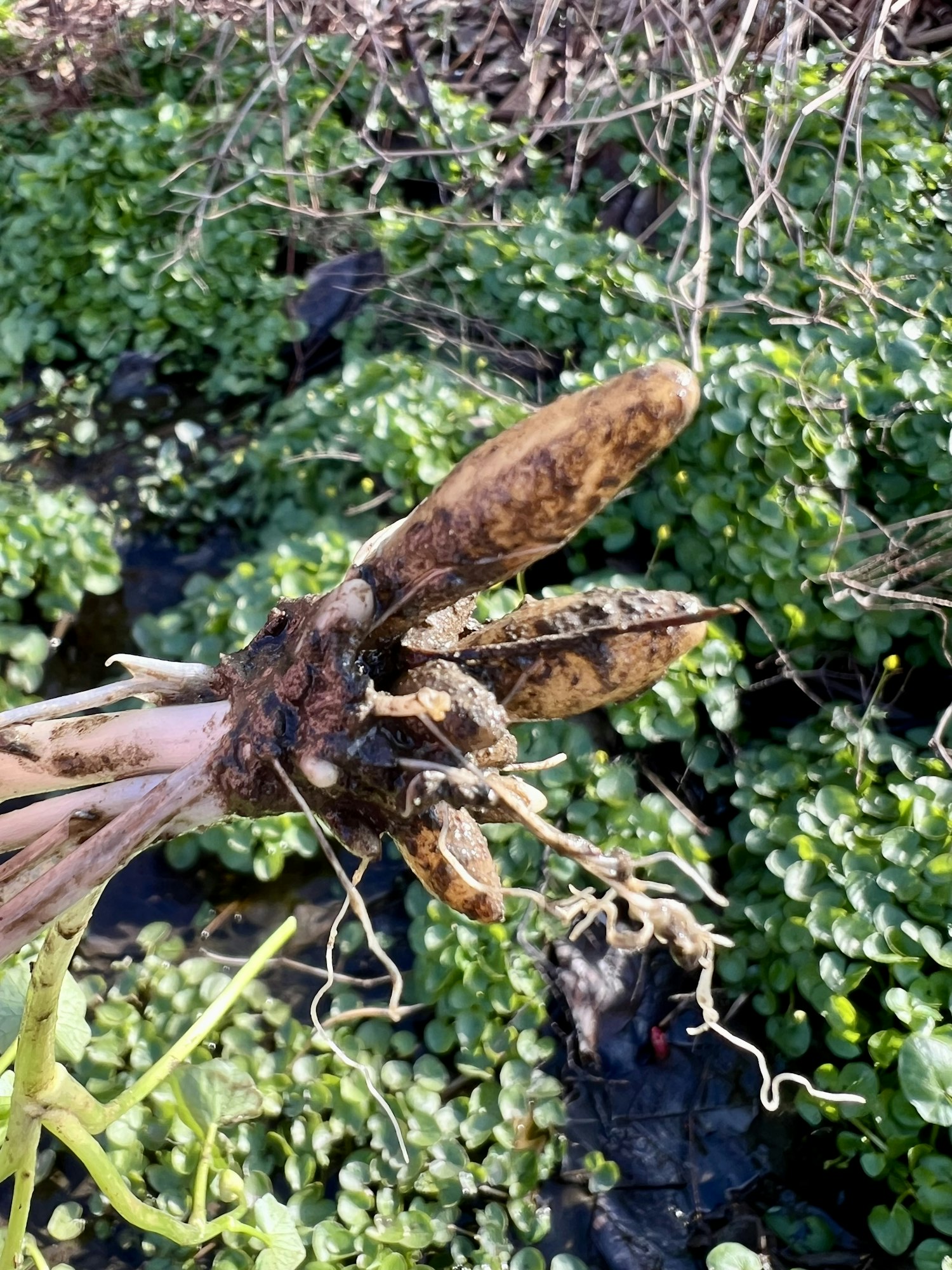Watch Out for Lesser Celandine: Ephemeral Beauty, Lasting Ecological Impact
Watch Out for Lesser Celandine: Ephemeral beauty, lasting ecological impact
Jennifer Garrett, Project Director, Vermont Land Trust
Each spring, Vermonters eagerly await the emergence of spring ephemeral wildflowers. Bloodroot, hepatica, trout lily, spring beauty, and many others carpet our rich forests, floodplains, and stream shores for a few short weeks before deciduous trees leaf out. These plants preserve soil nutrients, provide nectar to early-season pollinators, and many have symbiotic relationships with forest ants. But now an introduced spring ephemeral has begun to take root in the Green Mountain State. A low-growing wildflower of the buttercup family known as lesser celandine (fig buttercup, fig crowfoot; Ficaria verna) is native to parts of Europe, Africa, and Asia, but has become established in North America.

Lesser celandine is a charismatic plant with 7 to 12 sunny yellow petals, dark green heart-shaped leaves, and chunky tuberous roots. It superficially resembles marsh marigold (Caltha palustris), which is a native spring ephemeral of wetlands. An article on Buckeye Lawn & Garden onLine (“Lesser Celandine Tests the ‘Ephemeral’ Concept”), which is hosted by Ohio State University, has excellent photos, identification, and life history information for lesser celandine.
Once established, lesser celandine can form dense, expansive mats across moist, sandy soils. It has an affinity for riparian areas—river shores, swales, and forests—but it can also grow in fields and lawns. Lesser celandine handily outcompetes native plants, disrupting the natural ecological processes of the habitat where it grows. Due to its phenology (the timing of its emergence, flowering, and reproduction), and habitat affinity, it particularly threatens native spring wildflowers and the important roles they play in our forest ecosystems.
Lesser celandine mainly spreads through vegetative means. Both its “bulbils,” small fleshy organs at the leaf bases, and its tubers in the root system can break off and form new plants. By summer, lesser celandine’s leaves and flowers die back entirely, leaving only the roots beneath the soil. The sites are typically co-occupied by other plants that emerge or germinate later. This makes lesser celandine difficult to document and manage outside of the early spring season.

According to iNaturalist, it is present in several southern Vermont towns, including Bennington, Brattleboro, Hartland, Marlboro, Newfane, Pomfret, Rockingham, Westminster, Windsor, and Woodstock. There are several other observations in central Vermont and the Champlain Basin.
The ease with which lesser celandine can reproduce and spread makes it attractive to plant enthusiasts and nurseries to cultivate, share, and sell. It is considered “invasive” in most states, and is “prohibited” (to grow, sell, transport, etc.) in neighboring Massachusetts and New York, though it is not currently on the Vermont Noxious Weed List.
Targeted early spring treatment with a glyphosate-based herbicide formulations (applied according to the label instructions) is reported by many online sources to be the most effective method to control lesser celandine, and this can be done before most other plants emerge. Small populations can be dug up and removed, but getting all the tubers is critical to success and this can cause excessive soil disturbance. The removed soil and plant material must be carefully handled to avoid inadvertent spread by dropped tubers or bulbils. Mowing is risky because it could spread the plant. Smothering and “solarizing” with black plastic for a year or more may have some success in killing lesser celandine, but it will also kill much of the co-occurring vegetation. Jim Varick of The Woodland Steward web page has a helpful YouTube video (“Treating Lesser Celandine”) that compares 14 different control methods, include those described above.
Regardless of the control method, gloves and protective clothing are important when handling and removing lesser celandine, as it could cause skin irritation. Also be aware that lesser celandine bulbils could be carried away in the treads of your shoes, so consider using a boot brush before leaving the site.
Get out and enjoy the spring wildflowers this spring and keep a lookout for lesser celandine. Don’t buy it or plant it, as it can easily spread from gardens and lawns. If you see it for sale in Vermont, contact the vender and alert them of its potential threat to natural areas. If you find a patch, consider reporting it on iNaturalist and informing the landowner or manager so it can be controlled.